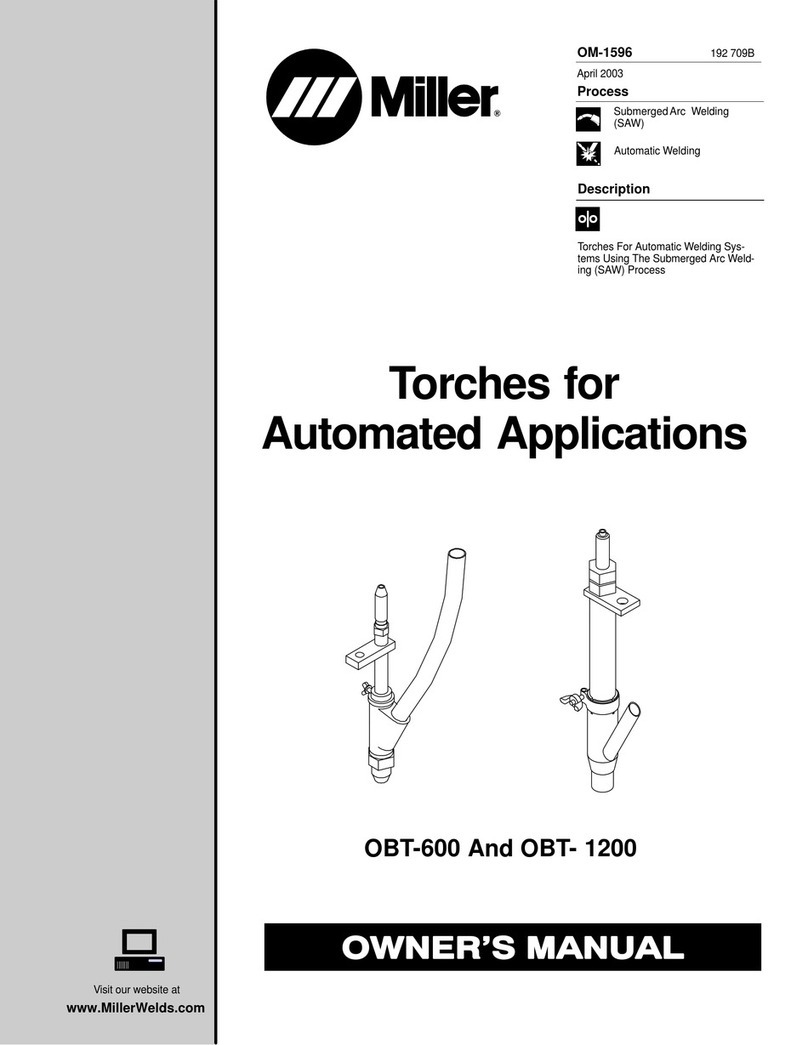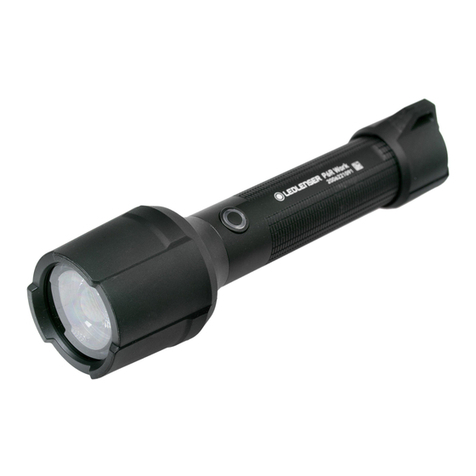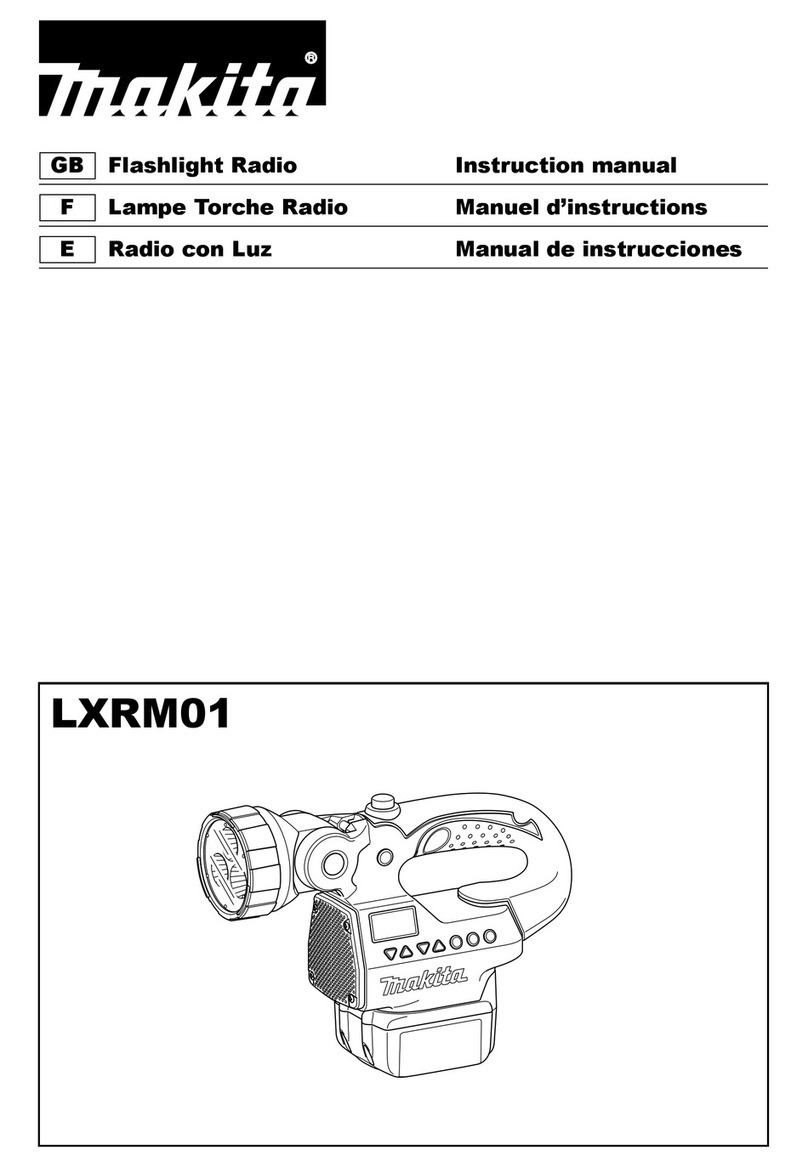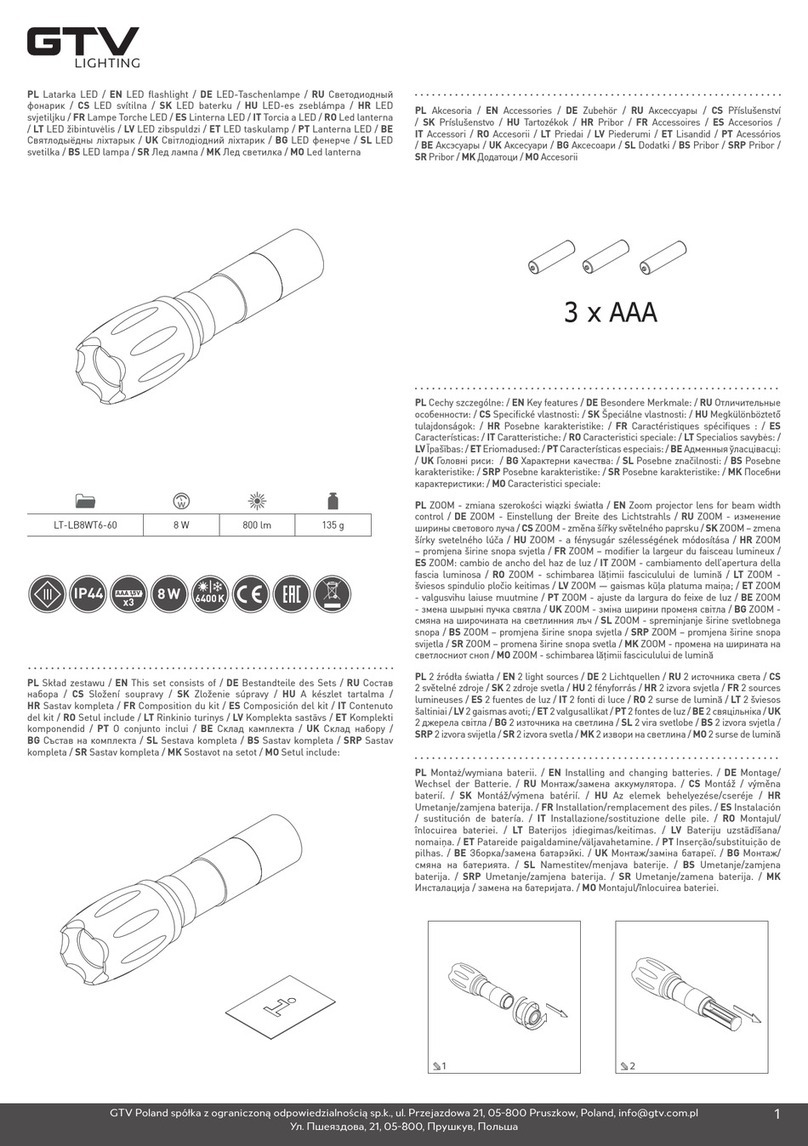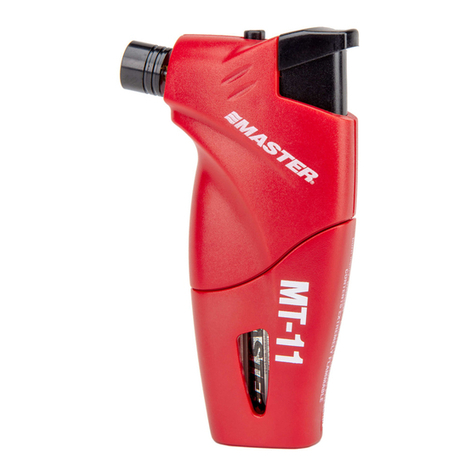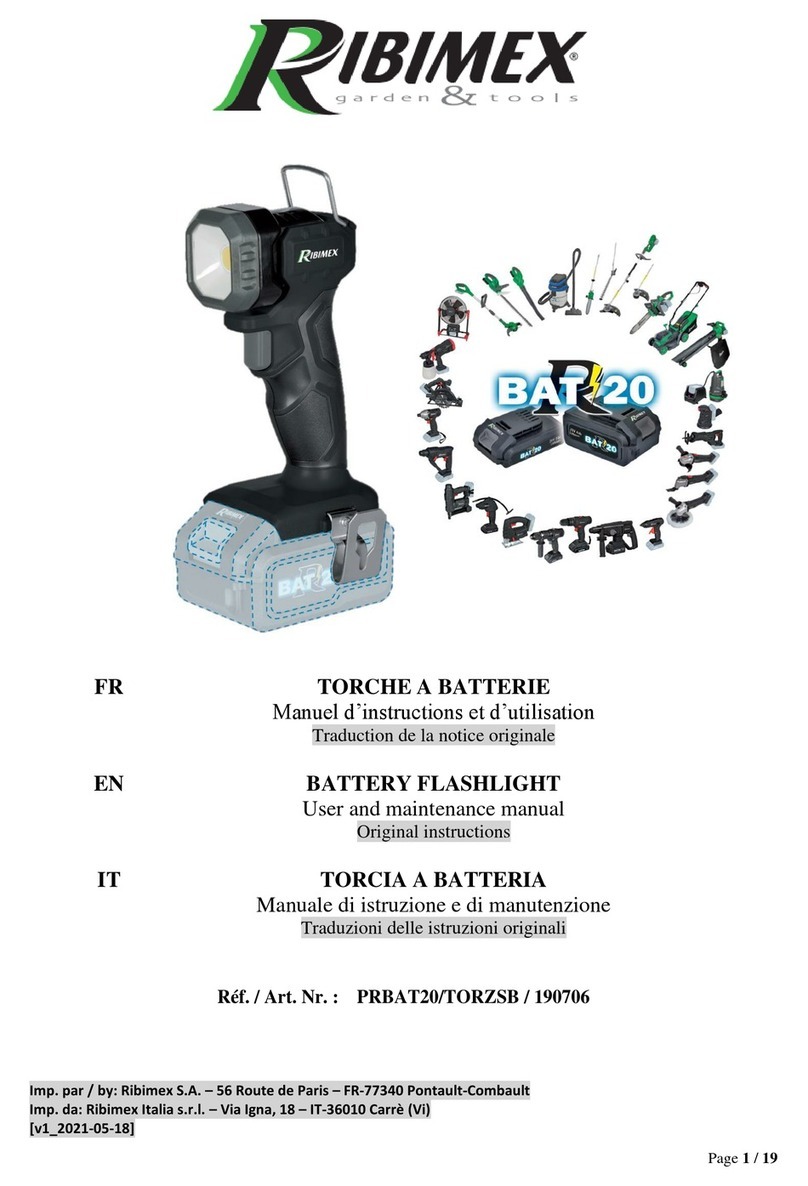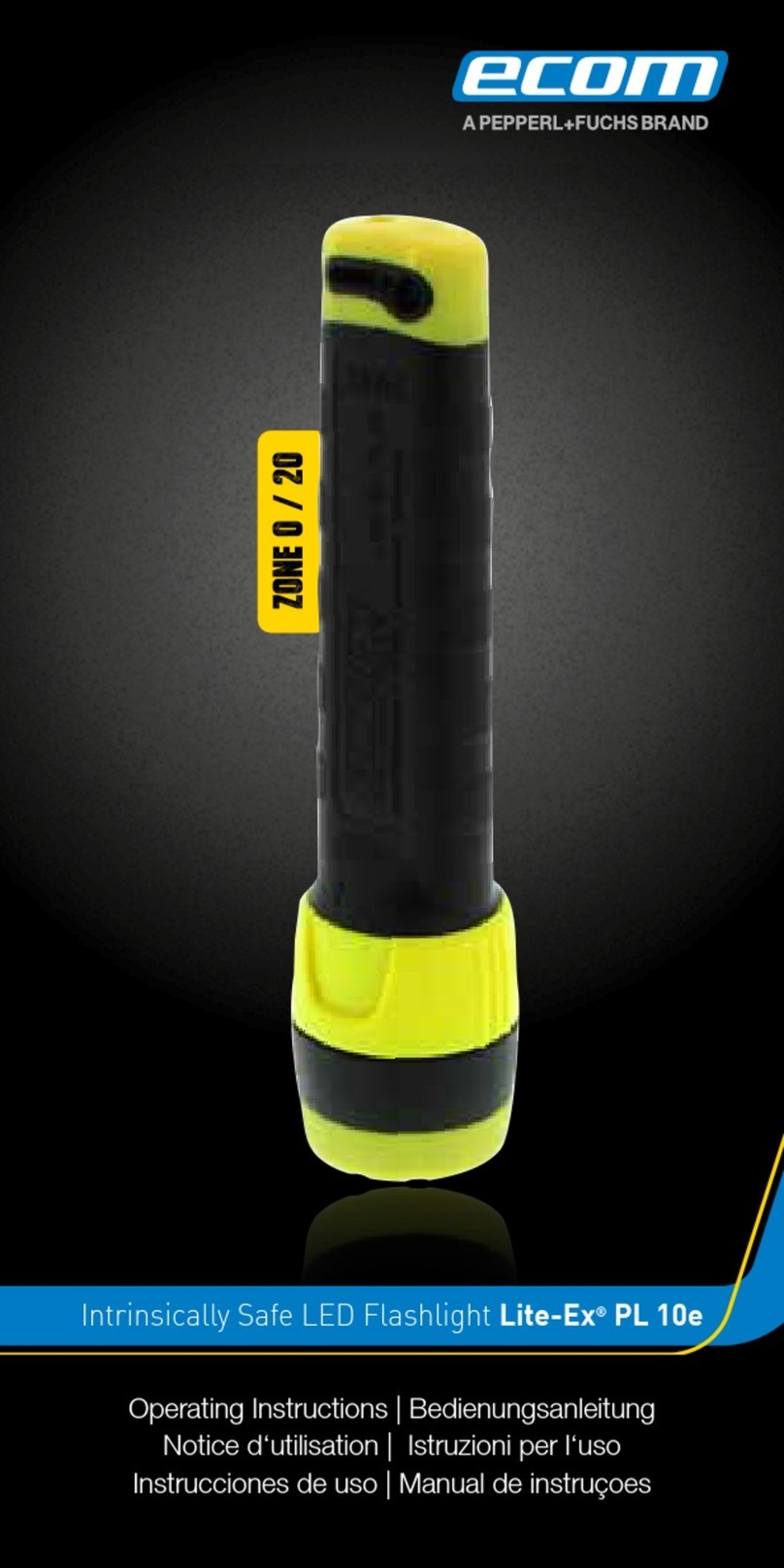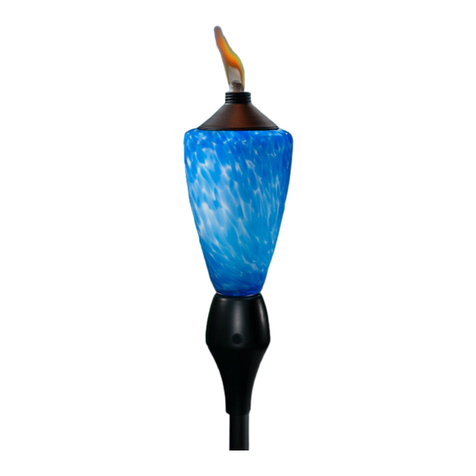Federal Signal Corporation Valor FSJoin Manual

25500671
REV. A0 1020
Printed in U.S.A.
© Copyright 2020 Federal Signal Corporation
Installation, Maintenance,
and Service Manual
Valor®FSJoin Light Bar Manual

blank page
Limited Warranty
This product is subject to and covered by a limited warranty,
a copy of which can be found at www.fedsig.com/SSG-Warranty.
A copy of this limited warranty can also be obtained by written
request to Federal Signal Corporation, 2645 Federal Signal Drive,
call +1 708-534-3400.
This limited warranty is in lieu of all other warranties, express or
implied, contractual or statutory, including, but not limited to the
warranty of merchantability, warranty of tness for a particular
purpose and any warranty against failure of its essential purpose.
2645 Federal Signal Drive
University Park, Illinois 60484-3167
www.fedsig.com
Customer Support
Police/Fire-EMS: 800-264-3578 • +1 708 534-3400
Work Truck: 800-824-0254 • +1 708 534-3400
Technical Support 800-433-9132 • +1 708 534-3400
All product names or trademarks are properties of their respective owners.

3
Installation, Maintenance, and Service Manual
Federal Signal www.fedsig.com
Contents
Safety Messages.............................................................................................................................. 5
Safety Message to Installers and Service Personnel of Warning Lights...........................................5
Safety Message to Operators of Warning Light Equipment.................................................................8
An Overview of the Valor Light Bar ............................................................................................. 10
LED Lights, Colors, and Flash Patterns.................................................................................................... 10
Modular Connector System ........................................................................................................................10
Controller Options .........................................................................................................................................10
FSJoin ................................................................................................................................................................ 11
Product Specifications................................................................................................................................... 11
Preparing the Valor for Installation.............................................................................................. 12
Unpacking the Light Bar .............................................................................................................................. 12
Connecting the Light Bar for Programming............................................................................................ 12
Identifying the Control Wires for Flash Patterns.................................................................................... 14
Wiring the Valor in the Vehicle .................................................................................................... 15
Planning the Electrical Installation............................................................................................................. 15
Connecting Power to the Light Bar .......................................................................................................... 17
Installing the Serial Interface Module....................................................................................................... 17
Wiring the Serial Interface Module............................................................................................................ 19
Maintaining and Servicing the Valor............................................................................................ 31
Cleaning the Light Bar Lens........................................................................................................................ 31
Removing and Reinstalling the Light Bar Lens...................................................................................... 32
Replacing a PCB............................................................................................................................................ 33
Disconnecting/Connecting Power and CAT5 at the Light Bar ......................................................... 34
Troubleshooting the Light Bar................................................................................................................... 37
Quick Testing the Valor with the Light Bar Test .................................................................................... 38
Testing the Steady Burn LEDs (HotFoot Only) ...................................................................................... 39
Getting Technical Support and Service....................................................................................... 39
Getting Repair Service................................................................................................................................. 39
Replacement Parts........................................................................................................................................ 40

4Valor®FSJoin Light Bar
Federal Signal www.fedsig.com
Figures
Figure 1 Serial Interface Module connections for programming ........................................................... 13
Figure 2 Relay-isolating devices with large filter capacitors .................................................................. 19
Figure 3 Wiring block diagram ....................................................................................................................... 19
Figure 4 SignalMaster flash sequences...................................................................................................... 23
Figure 5 SignalMaster functions wired to 12 Vdc for internal Serial Interface Module control .... 24
Figure 6 SignalMaster functions wired to ground for external Serial Interface Module control..25
Figure 7 Typical connections with a SignalMaster controller (external control) ............................... 26
Figure 8 Typical connections with a SW400SS Switch Module (internal control) ........................... 27
Figure 9 Typical connections with a SmartSiren Model SS2000SM controller ............................... 28
Figure 10 Typical connections with a non-SignalMaster controller ..................................................... 29
Figure 11 Typical connections with a PA640 controller.......................................................................... 30
Figure 12 Locations of barrel nuts in light bar cover................................................................................ 32
Figure 13 Location of controller..................................................................................................................... 33
Figure 14 Locations of watertight connectors............................................................................................ 34
Figure 15 Secondary lock mechanism in the plug and receptacle...................................................... 35
Tables
Table 1 Dimensions ............................................................................................................................................ 11
Table 2 Light Specifications ............................................................................................................................ 11
Table 3 Electrical and Temperature............................................................................................................... 11
Table 4 Control wires from the Serial Interface Module with Default Programming....................... 14
Table 5 SignalMaster control wires and warning patterns ..................................................................22
Table 6 Troubleshooting tips ........................................................................................................................ 37
Table 7 Replacement parts............................................................................................................................ 40

5
Installation, Maintenance, and Service Manual
Federal Signal www.fedsig.com
Safety Messages
Safety Messages
For your safety, read and understand this manual thoroughly before installing,
operating, and servicing the Valor®light bar. The safety messages presented in this
chapter and throughout the manual are reminders to exercise extreme care at all
times. To download copies of the manual, go to www.fedsig.com or call the Federal
Signal Service Department at 1-800-433-9132, 7 a.m. to 5 p.m., Monday through Friday
(CT).
Safety Message to Installers and Service Personnel of Warning Lights
People’s lives depend on your proper installation and servicing of Federal Signal
products. It is important to read and follow all instructions shipped with this product.
Listed below are some other important safety instructions and precautions you should
follow:
Before Installation or Service
Qualifications
• To properly install or service this equipment, you must have a good understanding
of automotive mechanical and electrical procedures and systems along with
proficiency in the installation and service of safety warning equipment. Always
refer to the vehicle service manuals when performing equipment installations on a
vehicle.
Light Hazards
• To be an eective warning device, this product produces bright light that can be
hazardous to your eyesight when viewed at a close range. Do not stare directly
into this lighting product at a close range or permanent damage to your eyesight
may occur.
• Do not install the light system in an area that would block, impair, or blind the
driver’s vision. Ensure that the light system is mounted in a position that is outside
of the driver’s field of vision, so the driver can safely operate the vehicle.
• Federal Signal power supplies and lightheads are designed to work together as
a system. Combining lightheads and a power supply from dierent manufacturers
may reduce the warning eectiveness of the lighting system and may damage
the components. You should verify or test your combination to ensure the system
works together and meets federal, state, and local standards or guidelines.
Electrical Hazards
• Strobe systems present a shock hazard because they use high voltage to operate.
Do not handle strobe cables, the power supply, or bulbs or remove the lens while
the equipment is connected. Strobe systems can also hold their charge even after
they have been turned o. After disconnecting power to the unit, wait five minutes
before handling any parts of the strobe system.

6Valor®Light Bar
Federal Signal www.fedsig.com
Safety Messages
• A light system is a high current system. In order for the system to function
properly, a separate negative (–) connection and positive (+) connection must
be made. All negative connections should be connected to the negative battery
terminal and a suitable fuse should be installed on the positive battery terminal
connection as close to the battery as possible. Ensure that all wires and fuses are
rated correctly to handle the device and system amperage requirements.
• Never attempt to install aftermarket equipment that connects to the vehicle wiring
without reviewing a vehicle wiring diagram available from the vehicle manufacturer.
Ensure that your installation will not aect vehicle operation or mandated
safety functions or circuits. Always check the vehicle for proper operation after
installation.
• The lighting system components, especially light bulbs, strobe tubes, LEDs, and
the outer housing, get hot during operation. Be sure to disconnect power to the
system and allow the system to cool down before handling any components of the
system.
• Halogen light bulbs and strobe tubes are pressurized and if broken, can burst and
result in flying glass. Always wear gloves and eye protection when handling these
components.
• Do not mount a radio antenna within 18 inches (45.7 cm) of the lighting system.
Placing the antenna too close to the lighting system could cause the lighting
system to malfunction or be damaged by strong radio fields. Mounting the
antenna too close to the lighting system may also cause the radio noise emitted
from the lighting system to interfere with the reception of the radio transmitter and
reduce radio reception.
• Do not attempt to wash any unsealed electrical device while it is connected to its
power source.
During Installation and Service
• DO NOT get metal shavings inside the product. Metal shavings in the product
can cause the system to fail. If drilling must be done near the unit, place an ESD-
approved cover over the unit. Inspect the unit after mounting to be sure there are
no shavings present in or near the unit.
• To avoid a battery explosion, always disconnect the negative battery cable first
and reconnect it last. Avoid causing a spark when connecting near or to the
battery. The gases produced by a battery can caused a battery explosion that
could result in vehicle damage and serious injury.
• DO NOT connect this system to the vehicle battery until ALL other electrical
connections are made, mounting of all components is complete, and you have
verified that no shorts exist. If the wiring is shorted to the vehicle body or frame,
high current conductors can cause hazardous sparks resulting in electrical fires or
flying molten metal.

7
Installation, Maintenance, and Service Manual
Federal Signal www.fedsig.com
Safety Messages
• DO NOT install equipment or route wiring (or the plug in cord) in the deployment
path of an airbag.
• If a vehicle seat is temporarily removed, verify with the vehicle manufacturer if the
seat needs to be recalibrated for proper airbag deployment.
• Before mounting any components, check the manual to be sure that the
component you are installing is suitable for use in that area of the vehicle. Many
components are not suitable for use in the engine compartment or other extreme
environmental exposure areas.
• The service life of light bulbs and strobes tubes will be shortened if the
glass portion is touched during installation. Use gloves when handling these
components. If the glass portion has been touched, clean the glass carefully with
isopropyl alcohol.
• When drilling into a vehicle structure, be sure that both sides of the surface are
clear of anything that could be damaged. Remove all burrs from drilled holes. To
prevent electrical shorts, grommet all drilled holes through which wiring passes.
Also, ensure that the mounting screws do not cause electrical or mechanical
damage to the vehicle.
• Refer to the manual packed with the lighting system for proper electrical
connections, additional precautions, and information.
• Because vehicle roof construction and driving conditions vary, do not drive a
vehicle with a magnetically mounted warning light installed. The light could fly
o the vehicle causing injury or damage. Repair of damage incurred because of
ignoring this warning shall be the sole responsibility of the user.
• To avoid denting the roof of the vehicle, place the light bar mounting feet as close
to the outer edge of the roof as possible.
• Roof damage can occur if the hook adjustment bolts are over-tightened. On Arjent
and Vista light bars tighten the hook-adjustment bolts 10 ft-lb to 11ft-lb. On all
other light bars tighten the adjustment bolts 6 ft-lb to 7 ft-lb. Install keeper plates.
• Locate the light system controls so the VEHICLE and CONTROLS can be operated
safely under all driving conditions.
After Installation or Service
• After installation, test the light system to ensure that it is operating properly.
• To ensure proper operation, test all vehicle functions, including horn operation,
vehicle safety functions, and vehicle light systems. Ensure that the installation
has not aected the vehicle operation or changed any vehicle safety function or
circuit.

8Valor®Light Bar
Federal Signal www.fedsig.com
Safety Messages
• Scratched or dull reflectors, mirrors, or lenses will reduce the eectiveness of
the lighting system. Avoid heavy pressure and use of caustic or petroleum based
products when cleaning the lighting system. Replace any optical components that
may have been scratched or crazed during system installation.
• Do not attempt to activate or de-activate the light system control while driving in a
hazardous situation.
• Frequently inspect the light system to ensure that it is operating properly and that
it is securely attached to the vehicle.
• After installation and testing are complete, provide a copy of these instructions to
instructional sta and all operating personnel.
• File these instructions in a safe place and refer to them when maintaining and/or re-
installing the product.
Failure to follow these precautions may result in property damage, serious injury, or
death.
Safety Message to Operators of Warning Light Equipment
People’s lives depend on your safe use of our products. Listed below are some
important safety instructions and precautions you should follow:
• Do not attempt to activate or de-activate the light system control while driving in a
hazardous situation.
• Although your warning system is operating properly, it may not be completely
eective. People may not see or heed your warning signal. You must recognize
this fact and continue driving cautiously.
• Situations may occur which obstruct your warning signal when natural and man-
made objects are between your vehicle and others, such as raising your hood or
trunk lid. If these situations occur, be especially careful.
• The eectiveness of an interior mounted warning light depends on the clarity, the
tinting, and the angle of the glass it is being placed behind. Tinting, dirt, defects,
and steeply angled glass reduce the light output of the warning light. This may
reduce the eectiveness of the light as a warning signal. If your vehicle has dirty,
tinted, or steeply angled glass, use extra caution when driving your vehicle or
blocking the right of way with your vehicle.
• All eective sirens and horns produce loud sounds that may cause, in certain
situations, permanent hearing loss. You and your passengers should consider
taking appropriate safety precautions, such as wearing hearing protection.
• In order to be an eective warning device, this product produces bright light that
can be hazardous to your eyesight when viewed at a close range. Do not stare
directly into this lighting product at a close range or permanent damage to your
eyesight may occur.

9
Installation, Maintenance, and Service Manual
Federal Signal www.fedsig.com
Safety Messages
• It is important that you fully understand how to safely operate this warning system
before use.
• Only operate your vehicle and its light/sound system per your department’s
Standard Operating Procedures.
• If a selected function does not perform properly or if any of the lamps remain
illuminated when the control is o, disconnect the power connector from the control
unit and contact the nearest service center.
• At the start of your shift, you should ensure that the entire warning light system
and the siren system is securely attached and operating properly.
• Suction cup mounting is for temporary applications only. The unit should be
removed from the window and stored securely when not in use. Temperature
changes and sunlight can cause suction cups to lose holding power. Periodically
check the unit to be sure the suction cups have a firm grip on the mounting
surface. An improperly secured light could fall o of the vehicle causing injury and
damage.
• Holding power of magnetic mounting systems is dependent upon surface finish,
surface flatness, and thickness of the steel mounting surface. Therefore, to
promote proper magnetic mounting:
• Mounting surface and magnets must be kept clean, dry, and free of foreign
particles that prevent good surface contact.
• Ensure that mounting surface is flat.
• A magnet mounting system should not be used on vehicles with vinyl tops.
• To prevent sliding of light assembly on mounting surface, quick acceleration
and hard stops should be avoided.
Failure to follow these precautions may result in property damage, serious injury, or
death.

10 Valor®Light Bar
Federal Signal www.fedsig.com
An Overview of the Valor®Light Bar
An Overview of the Valor Light Bar
The Valor Light Bar is a single-level LED light bar with ROC™ (Reliable On-Board
Circuitry) and Solaris®LED technologies. ROC™eliminates approximately 85 percent
of potential failure points by incorporating a printed circuit board (PCB) in one
assembly to substantially reduce the number of electrical connections. SolarisS2 LED
modules use oset, complex reflector surfaces for accurate beam-shaping and the
highest optical eciency. The reflectors’ overlapping, 360-degree lighting eliminates
weak spots and provides o-axis warning around the light bar. The light bar is shaped
to provide maximum intersection warning, the most dangerous situation in moving
trac.
LED Lights, Colors, and Flash Patterns
The light bar’s internal microprocessor supplies three priority operational modes
and a library of flash patterns. To increase the safety of ocers, pedestrians, and
motorists, the light bar has standard front and rear cuto, dimming, and intersection
warning. Bright white LED takedown and alley lights that are horizontally adjustable
are also available with the HotFoot™configured option.
Multi-color heads are available with up to three dierent colored LEDs, eliminating the
loss of primary warning colors in takedown, alley, and directional warning positions.
Individual Valor lightheads can flash between red, blue, amber, or white.
Modular Connector System
The Valor Light Bar has a waterproof (IP67) external connector system for power and
communication to allow removal of the light bar from the vehicle without opening the
light bar or the vehicle hood. The Valor is protected against reversed polarity damage.
The Valor Light Bar may be installed in any vehicle with a 12-volt negative ground
electrical system.
Controller Options
Flash patterns are controlled through the light bar CAT5 communication cable.
The cable connects to Federal Signal Convergence network controllers, or the
Convergence Serial Interface Module (Part Number 858303641).
With the Serial Interface Module, the light bar can be activated by Federal Signal light
bar controllers, SignalMaster®directional-light controllers, or by individual low-current
switch boxes.
Other advanced features of the Valor Light Bar include:
• A high degree of reliability through the use of advanced microprocessors and other
integrated circuits.
• One piece seamless construction that eliminates leaking bulkhead gaskets.
• High output, long-life LEDs with no bulbs to change.

11
Installation, Maintenance, and Service Manual
Federal Signal www.fedsig.com
An Overview of the Valor®Light Bar
FSJoin
Valor FSJoin light bars allow flash patterns to synchronize with other FSJoin
compatible devices. Light bar patterns and features can be programmed on an
individual light head with the Convergence Network Configuration Software. Outputs
or light heads set to the same flash rate automatically synchronize. A variety of
system features can be programmed with the Convergence Network Configuration
Software (available on the Federal Signal website at www.fedsig.com). Programming
requires an FSJoin compatible controller such as a Pathfinder®Siren/Light Controller.
Programming does not require disassembling or removing any hardware from the
vehicle.
Product Specications
Table 1 Dimensions
Model Length Height Width Weight*
VALR44 43.7 in (111.0 cm) 1.96 in (5.0 cm) 19.8 in (50.4 cm) 39.3 lb (17.8 kg)
VALR51 51.3 in (130.3 cm) 1.96 in (5.0 cm) 19.8 in (50.4 cm) 43.2 lb (19.6 kg)
*With standard mounting feet
Table 2 Light Specications
Lighting Option Current Draw* Lamp Technology Reector Style
LED (all heads) 1.0 A High brightness LED Oset, compound curve, polished
reector
*Amperage in Steady Burn Mode
Table 3 Electrical and Temperature
Model Electrical Potential Current Draw* Operating Temperature
VALR44 12.8 Vdc 12.0 A
14.0 A with HotFoot
−40ºF to 149ºF (−40ºC to 65ºC)
VALR51 12.8 Vdc 14.0 A
16.0 A with HotFoot
−40ºF to 149ºF (−40ºC to 65ºC)
*Amperage for a typically loaded light bar with all lights flashing at 50 percent duty
cycle

12 Valor®Light Bar
Federal Signal www.fedsig.com
Preparing the Valor for Installation
Preparing the Valor for Installation
Taking the preparatory steps in this chapter before mounting and wiring the light
bar to a vehicle will help ensure that your installation is fast, easy, and error free. In
addition to instructions for quick testing the light bar, this section has instructions for
changing default settings and flash patterns with the Serial Interface Module. The
number of available flash patterns vary between the Serial Interface Module and the
SmartSiren Platinum System. If you are using the SmartSiren Platinum System, refer
to the “Smart Siren Platinum Installation, Maintenance, and Service Manual” (Doc.
No. 2562502) and to the “Smart Siren Platinum Control Pad Configuration Software
Manual” (Doc. No. 2562418) programming instructions.
Unpacking the Light Bar
Carefully unpack the light bar assembly and any other products included in the
shipment. Inspect them for damage that may have occurred during shipping. If a
product has been damaged, do not install or operate it. Immediately file a claim with
the carrier describing the damage. Carefully check all envelopes, shipping labels,
and tags before removing or destroying them. If you are missing any parts, contact
Customer Support at 1-800-264-3578, 7 a.m. to 5 p.m., Monday through Friday (CT).
Connecting the Light Bar for Programming
HEAVY OBJECT: Use lifting aids and proper lifting techniques when removing
or replacing this product. Failure to follow this warning may cause personal
injury.
REVERSE POLARITY/MISWIRING: Reverse polarity may damage the siren
amplier. To avoid damage to the siren/amplier, ensure that the battery
voltage is the same voltage as the rating of the light and that the correct
polarity is observed.
The Valor does not require any internal wiring. Two 10 AWG power conductors (red
and black) and a CAT5 cable exit the light bar. The light bar’s basic light functions
are communicated through the CAT5 cable, which connects to the Serial Interface
Module, SmartSiren Platinum, or other Federal Signal controllers.
The electrical connections in this section enable you to perform a quick test of the
light bar with the Serial Interface Module. The Serial Interface Module communicates
between an installer-supplied light bar/siren controller, a SignalMaster controller, or a
switch box and the light bar. To minimize the number of discrete wires to the light bar,
control head functions are wired to the Module through a 3-foot-long, 24-conductor
cable harness. The information is converted to a digital format and communicated
through the CAT5 serial communication cable.
See Serial Interface Module Instructions for more information on programming.

13
Installation, Maintenance, and Service Manual
Federal Signal www.fedsig.com
Preparing the Valor for Installation
The numbers in the steps below refer to the wires in Figure 1. To connect the Valor to
the battery and Serial Interface Module:
1. To supply power to the light bar, use a fully-charged 12-volt automotive battery
with terminal lugs.
2. Place the light bar on a sturdy, flat surface.
3. Plug the CAT5 communication cable (1) from the light bar into the Serial Interface
Module (J1).
4. Plug the 24-pin harness (2) into the Serial Interface Module.
5. Attach the light bar’s black ground-power line (3) to the negative battery (–GND)
lug.
6. Attach the light bar’s red power line (4) through a 40 A Maxi®fuse to the positive
battery (+BAT) lug.
7. Attach the white wire (5) from the 24-pin harness through a 1 A fuse to the positive
battery (+BAT) lug.
8. Attach the black wire and the black/white wire (6) from the 24-pin harness to the
negative battery
(–GND) lug.
Figure 1 Serial Interface Module connections for programming
290A6559
SERIAL
INTERFACE
MODULE
POWER LINE (RED)
GROUND POWER LINE (BLACK)
BLACK WIRE
BLACK / WHITE WIRE
CAT5
COM.
CABLE
(GRAY)
WHITE WIRE 24-PIN HARNESS
5
+ –
12 Vdc
VEHICLE
BATTERY
4
3
1
2
6

14 Valor®Light Bar
Federal Signal www.fedsig.com
Preparing the Valor for Installation
Identifying the Control Wires for Flash Patterns
This section describes how to program flash patterns by applying 12 Vdc to the
control wires in the 24-pin harness of Serial Interface Module. Table 4 shows the
control wires and colors. The first color is the predominant color, and additional colors
are stripes.
Table 4 Control wires from the Serial Interface Module with Default Programming
Light Bar Controls Wire Color Description
Mode 1 Blue Lowest priority.
Mode 2 Blue/White Overrides Mode 1.
Mode 3 Black/Red Overrides Modes 1 and 2.
Steady Burn
(HotFoot only)
Red/White One or more LEDs steadily burn when 12 Vdc
is applied to the control wire for a Mode and the
control wire for Steady Burn.
Front Cuto Green/White Turns o the front of the light bar.
Front Enable Turns on the front of the light bar.
Rear Cuto Orange/Black Turns o the rear of the light bar.
Rear Enable Turns on the rear of the light bar.
Low Power White/Black/Red Dims the lights approximately 50 percent to
prevent blinding approaching drivers. Low Power
is only available in Modes 1 and 2 and is disabled
when switched to another ash pattern, including
Mode 3 and Intersection.
Flash Takedown/Alley Red/Black Flashes the alley and takedown lights in Modes 1,
2, or 3.
Left Alley Green/Black Turns on left alley lights. Overrides the Flash
Takedown/Alley lights.
Right Alley Orange/Red Turns on right alley lights. Overrides the Flash
Takedown/Alley lights.
Takedown White/Black Provides white light to the front. Overrides Flash
Takedown/Alley lights and front cuto.
Scene Light, Left Blue/Black Applying 12 Vdc to the Scene Light, Left wire turns
on the left half of the light bar.
Scene Light, Right Black/White/Red Applying 12 Vdc to the Scene Light, Right wire
turns on the right half of the light bar.

15
Installation, Maintenance, and Service Manual
Federal Signal www.fedsig.com
Wiring the Valor in the Vehicle
Wiring the Valor in the Vehicle
Before proceeding, ensure that the light bar has been installed on the vehicle roof
in accordance with the instructions included with the mounting kit. Depending on
the type of vehicle and mounting system feature, there are two options available
for installing the light bar to the roof of the vehicle: hook-on mounting or permanent
mounting.
INSTALLATION PRECAUTIONS: The warning system and/or two-way radio
system may operate improperly if a two-way radio antenna is installed on or
within 18 inches of the light bar. Before permanently installing the light bar or
a two-way radio antenna, test the warning system and two-way radio system.
Some installations may require the relocation of the two-way radio antenna
to the trunk or fender. DO NOT drill holes in the light bar or install auxiliary
devices on the light bar, or the warning system may fail.
Planning the Electrical Installation
The light bar is completely wired at the factory and does not require any additional
internal wiring. All the conductors necessary for control of any and all basic and
optional functions are contained in the CAT5 cable. The basic light functions of the
Valor must be controlled by a installer-supplied control head.
To prevent damage to the light bar and vehicle and ensure that all equipment
operates properly, carefully plan where to mount and wire the light bar and controlling
equipment:
1. Verify that the light bar and mounting hardware fit the vehicle.
2. Determine where to mount the light bar on the vehicle.
LOCATING OPERATOR CONTROLS: The controls for the light system must be
located so that the VEHICLE and CONTROLS can be operated safely under all
driving conditions.
UNIT REQUIRES SHELTER FROM WEATHER: The Serial Interface Module is
NOT waterproof. It must be mounted in a location that is sheltered from rain,
snow, standing water, etc.

16 Valor®Light Bar
Federal Signal www.fedsig.com
Wiring the Valor in the Vehicle
3. Determine where to mount the controlling equipment:
• Trunk or remote location
• Console
AIRBAG DEPLOYMENT: Do not install equipment or route wiring in the
deployment path of an airbag. Failure to observe this warning will reduce the
eectiveness of the airbag or potentially dislodge the equipment, causing
serious injury or death.
4. Decide where to route wiring around airbag areas.
EXPLOSION HAZARD: To avoid a battery explosion, always disconnect the
negative battery cable rst and reconnect it last. Avoid causing a spark when
connecting near or to the battery. The gases produced by a battery can cause
a battery explosion that could result in vehicle damage and serious injury.
5. Decide where to route the light bar’s power and ground wires.
SEAT REMOVAL PRECAUTION: If a vehicle seat is temporarily removed, verify
with the vehicle manufacturer if the seat needs to be recalibrated for proper
airbag deployment.
6. To make wiring easier, remove the seats, spare tire, and pull down the headliner
where needed.
7. Separate all electronic equipment wiring from two-way radio equipment wiring.
8. To avoid interference, keep two-way radio antennas a minimum of 18 in (45.7 cm)
away from warning equipment.
9. Whenever possible, run full wire lengths. DO NOT splice the wires.
10. Do not coil excess wire. Leave a drain loop for servicing.
11. After drilling holes for wires, deburr them, smooth sharp edges, and insert
grommets to protect the wires from chafing.
12. When you frame-ground the equipment, use the manufacturer-supplied ground
locations in the vehicle.
IMPORTANT: After the installation, frequently inspect the light bar and mounting feet
to ensure that all fasteners and brackets are tight.

17
Installation, Maintenance, and Service Manual
Federal Signal www.fedsig.com
Wiring the Valor in the Vehicle
Connecting Power to the Light Bar
NOTE: Plan the location of the wire-routing hole in the vehicle roof so that the power
and communication cables do not have tight bends and have some slack to allow
disconnection on removal.
EXPLOSION HAZARD: To avoid a battery explosion, always disconnect the
negative battery cable rst and reconnect it last. Avoid causing a spark when
connecting near or to the battery. The gases produced by a battery can cause
a battery explosion that could result in vehicle damage and serious injury.
REVERSE POLARITY / MISWIRING: Reverse polarity or incorrect voltage may
damage the light. To avoid damage to the light, ensure that the battery voltage
is the same as the voltage rating of the light and that the correct polarity
is observed. If you are connecting to a cigarette lighter plug or 12 V outlet,
connect the positive wire to the center terminal and connect the negative wire
to the outer terminal.
To connect the power to the light bar:
1. Ensure that the lines are adequately fused as shown in the wiring schematics in
Chapter 5.
2. From the light bar, route the CAT5 control cable into the vehicle cab or trunk
near the eventual location of the Serial Interface Module. An input cable is also
provided with the Interface Module.
3. Route and connect the black lead from the light bar to the vehicle battery’s ground
(–GND) terminal.
4. Route and connect the red lead from the light bar through a 40 A Maxi®fuse at the
source, which is the positive battery terminal (+BAT).
Installing the Serial Interface Module
UNIT REQUIRES VENTILATION: The Serial Interface Module needs to radiate
heat. Do not install it in an area where it cannot dissipate heat into the air. Do
not mount it near a heater duct.
UNIT REQUIRES SHELTER FROM WEATHER: The Serial Interface Module is
NOT waterproof. It must be mounted in a location that is sheltered from rain,
snow, standing water, etc.
IMPORTANT: The Serial Interface Module must be installed within 36 in (91 cm) of the
light bar controller.

18 Valor®Light Bar
Federal Signal www.fedsig.com
Wiring the Valor in the Vehicle
To mount the Serial Interface Module and make the power connections:
1. Use the Serial Interface Module as a template and scribe four drill-position marks
at the selected mounting location. Mounting centers are 2.00 in x 5.95 in (5.08 cm
x 15.11 cm).
DO NOT DRILL INTO SERIAL INTERFACE MODULE: DO NOT drill holes into
ANY part of the Serial Interface Module. Damage to the unit, serious injury, or
death may result.
DRILLING PRECAUTIONS: When drilling holes, check the area you are drilling
into to ensure that you do not damage vehicle components while drilling. All
drilled holes should be deburred, and all sharp edges should be smoothed. All
wire routings going through drilled holes should be protected by a grommet or
convolute/split loom tubing.
2. Drill four mounting holes at the drill-position marks, sized for the recommended
user-supplied #8 mounting hardware.
3. Secure the Serial Interface Module to the mounting surface with installer-supplied
#8 hardware.
4. Install the CAT5 serial cable from the light bar to the J3 output jack of the Serial
Interface Module.
5. Install the three-foot-long, 24-conductor cable from the light bar to the J1 input
connector of the Serial Interface Module.
NOTE: Powering multiple devices with a common control wire may cause one or
more devices to briefly remain functional after signal power is removed. For example,
due to the high input filter capacitance, a strobe supply can briefly supply the current
required to signal a light bar function to remain on. If necessary, use a relay to isolate
devices with large filter capacitors (Figure 2). All components/wires are user-supplied.
SHOCK HAZARD: Strobe and HID light systems generate high voltages.
Disconnect power from the system and wait at least 5 minutes before opening
the unit. Do not apply power to the unit while the unit is open. Failure to follow
this warning could result in serious injury or death.

19
Installation, Maintenance, and Service Manual
Federal Signal www.fedsig.com
Wiring the Valor in the Vehicle
Figure 2 Relay-isolating devices with large lter capacitors
290A6562
+12 Vdc
CONTROL LEAD
(12 Vdc SIGNAL ACTIVATED)
RELAY
FUSE*
STROBE SUPPLY
*FUSE AMPERAGE DEPENDS ON AMPERAGE OF DEVICES
Wiring the Serial Interface Module
FUSE ELECTRICAL SOURCES: Always fuse current/voltage sources with a
fuse connected near the power source. Ensure that the fuse is properly rated
to protect the electrical load, the wiring, and the connectors used in the circuit.
Failure to follow this notice could result in vehicle or equipment damage.
This section is an overview of default settings that are activated when connecting
LED and Mode control wires to 12 Vdc (+BAT). The basic light functions of the light bar
must be controlled by an installer-supplied control head. Programming is covered in
“Identifying the Control Wires for Flash Patterns” on page 14.
For a description of the control wires from the Serial Interface Module, see Table 5 on
page 14. For typical installations with common controllers and switch boxes, see the
wiring schematics starting on page 28.
To wire the controller’s functions to the Serial Interface Module’s 24-pin cable harness,
see Table 7 on page 10. If additional wire is necessary for the harness (except
ground), 22AWG wire is adequate. The ground wires must be extended with 16 AWG or
thicker wire
Figure 3 Wiring block diagram
290A6563
SERIAL INTERFACE
MODULE
PART #8583446
CAT5 CABLE
−+
BLACK 10 AWG
RED 10 AWG
MAXI FUSE
40 A
BATTERY
BLACK
WHITE
BLACK / WHITE
16 AWG
IGNITION
FUSE
1 A

20 Valor®Light Bar
Federal Signal www.fedsig.com
Wiring the Valor in the Vehicle
Priority Modes 1, 2, and 3
To activate a priority mode, apply 12 Vdc (+BAT) to a mode control wire. Mode 3
(black/red) overrides Mode2 (blue/white), and Mode 2 overrides Mode 1 (blue). You
can program one of the flash patterns in the light bar to each Mode input.
Steady Burn
When the light bar is equipped with one or more Steady Burn LED modules, applying
12 Vdc (+BAT) to the control wire (red/white) for Steady Burn turns on the LEDs when
any Mode input is selected.
Front Cuto
When 12 Vdc (+BAT) is applied to the Front Cuto control wire (green/white), the
selected Mode operation is deactivated to the front of the light bar. Only the rear
LEDs function. Additionally, with Flash Takedown/Alley (red/black) active, only the
alley lights turn on.
Rear Cut-O
When 12 Vdc (+BAT) is applied to the Rear Cuto control wire (orange/black), the
selected Mode operation is deactivated to the rear of the light bar. Only the front
LEDs flash.
NOTE: The operational settings for Front Cuto and Rear Cuto are not independent.
The default setting is for 12 Vdc (+BAT) to be applied for the light bar’s front and rear
lightheads to turn them o (Cuto).
Intersection
When 12 Vdc (+BAT) is applied to the Intersection control wire (blue/black) and a Mode
control wire, it turns on the Intersection pattern. When 12 Vdc is removed, the light
bar returns to its previous state. SW2 Switch 3 must be in the up (ON) position in the
Serial Interface Module.
NOTE: With the flexibility of the SmartSiren Platinum System, both the Intersection
and the Scene Light, Left option are available in Valor and Valor light bars without the
need to choose one or the other. (See Scene Light, Left, Right below.)
Flash Takedown/Alley
When 12 Vdc (+BAT) is applied to the Flash Takedown/Alley control wire (red/black)
and a MODE control wire, the takedown and alley lights flash.
Left and Right Alley Lights
When 12 Vdc (+BAT) is applied to the Left (green/black) or Right Alley control wire
(orange/red), the appropriate alley LEDs turn on. The left and right alley lights override
the flash/takedown alley lights.
Table of contents
Other Federal Signal Corporation Flashlight manuals
Popular Flashlight manuals by other brands
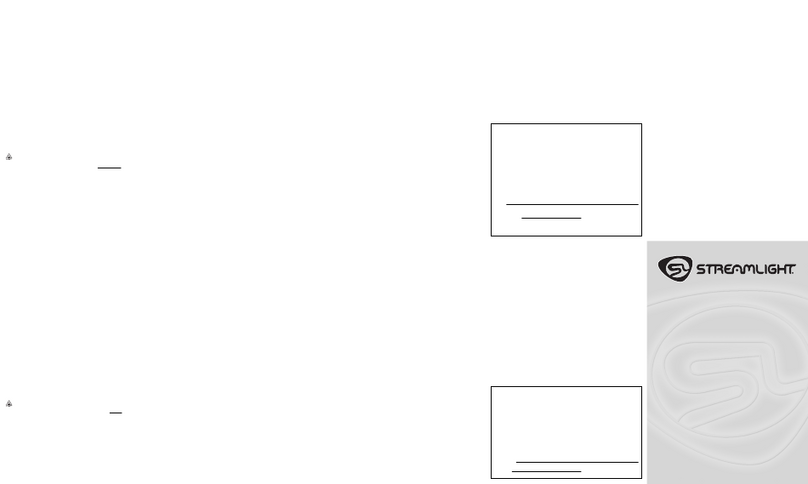
StreamLight
StreamLight Stinger operating instructions
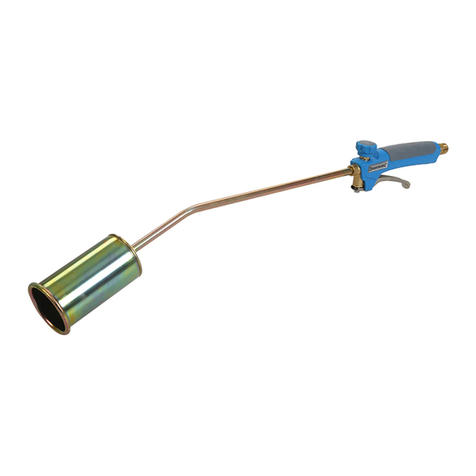
Silverline
Silverline 994024 manual
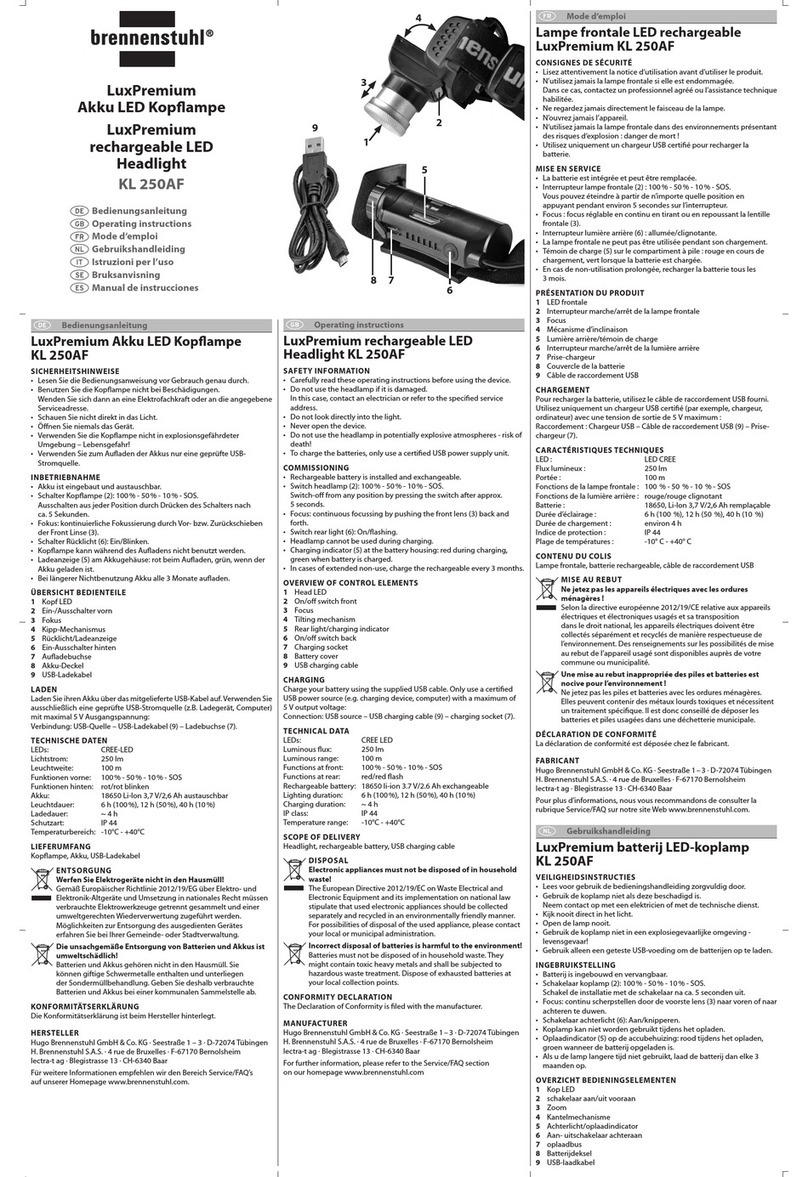
brennenstuhl
brennenstuhl KL 250AF operating instructions
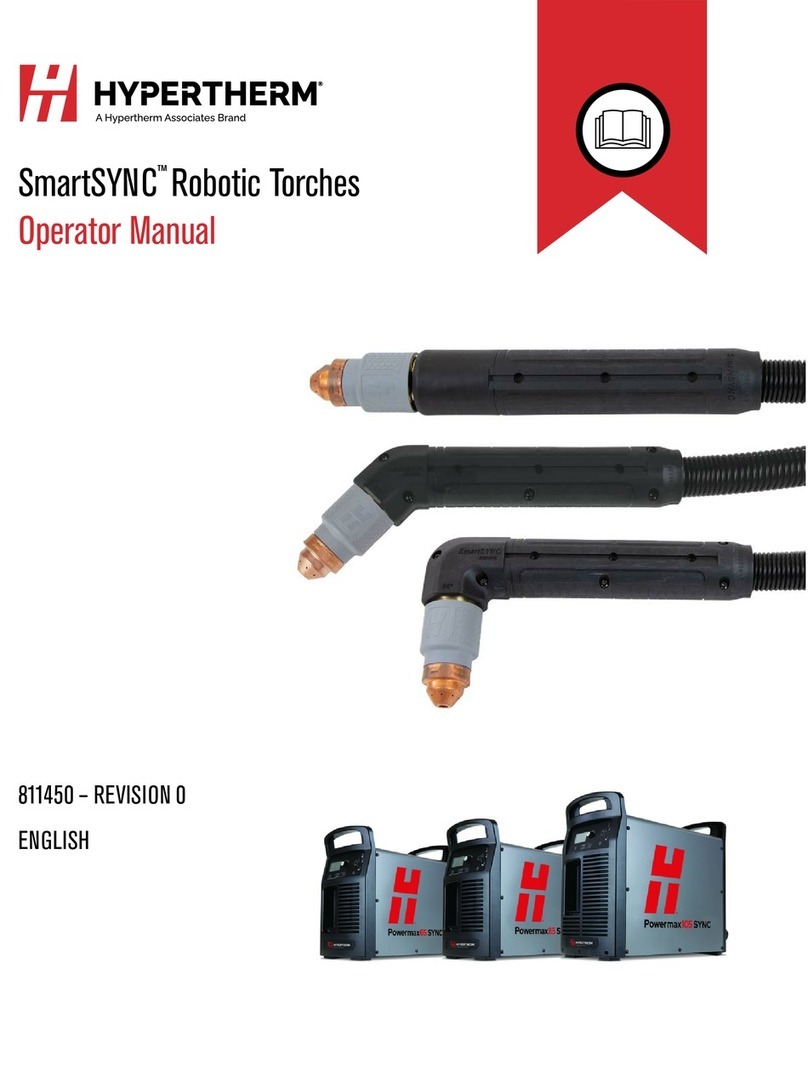
Hypertherm
Hypertherm SmartSYNC Robotic Torch Operator's manual
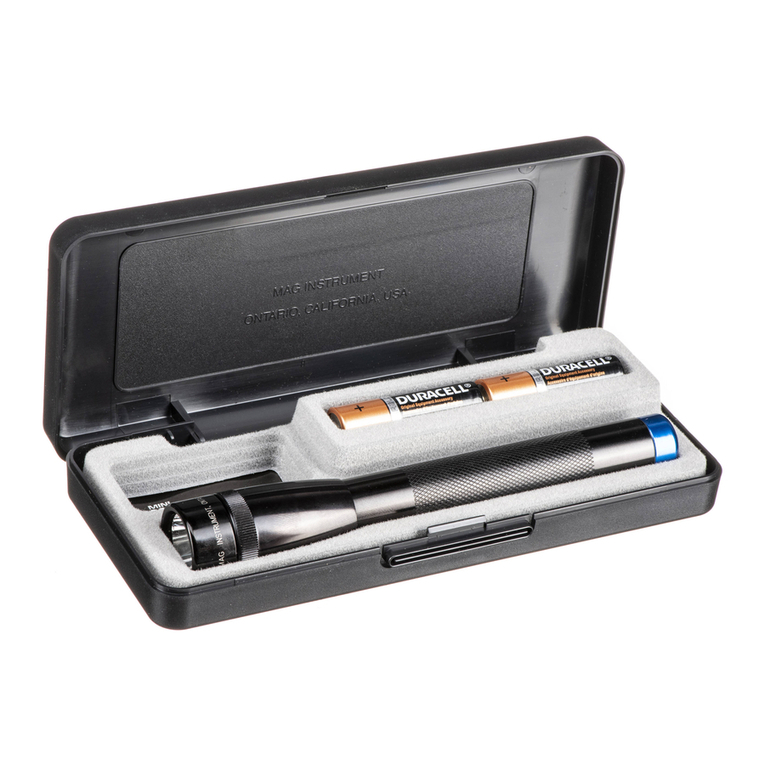
MAG
MAG Mini Maglite SERIES Repair manual
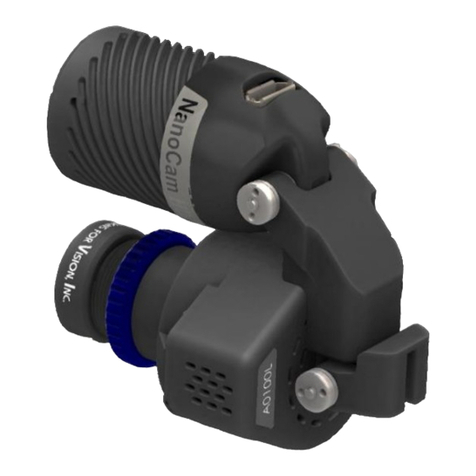
Designs for Vision
Designs for Vision LED DayLite NanoCam HDi DVI-LEDSC user guide




